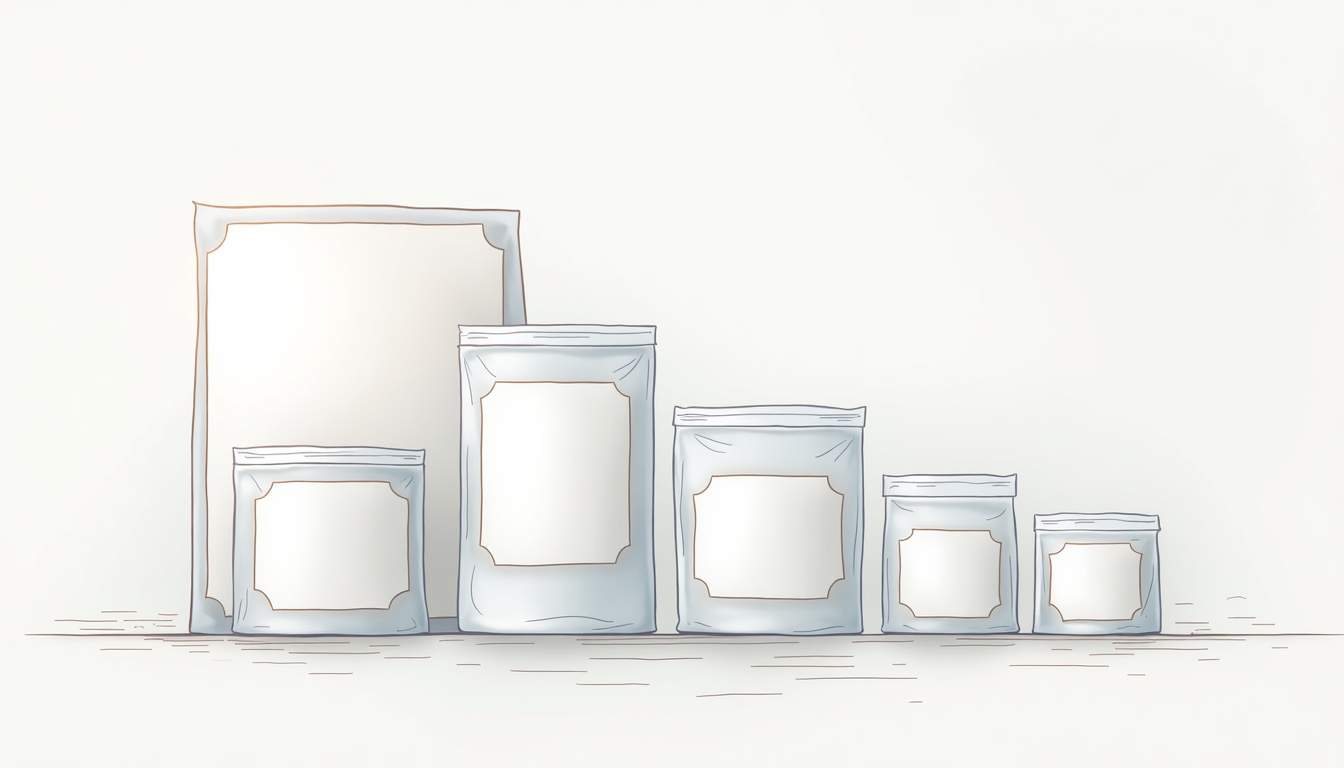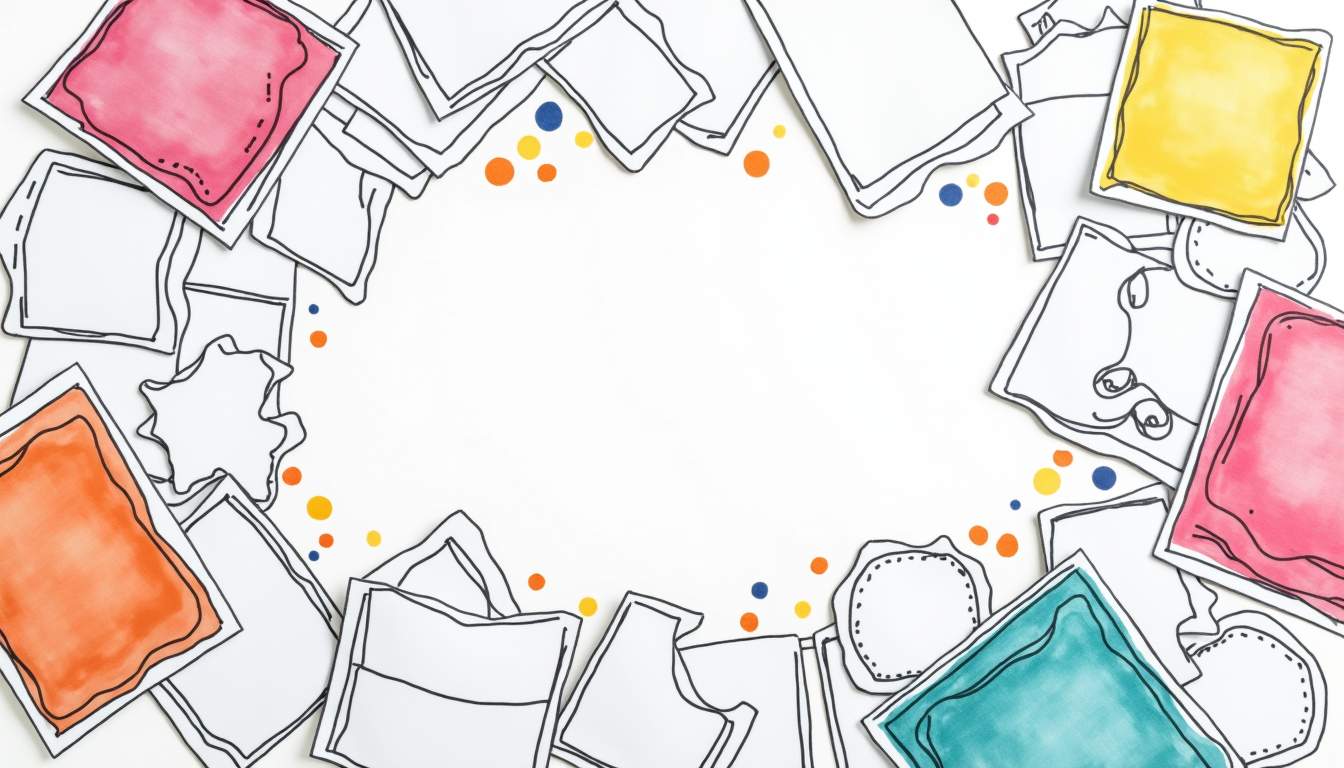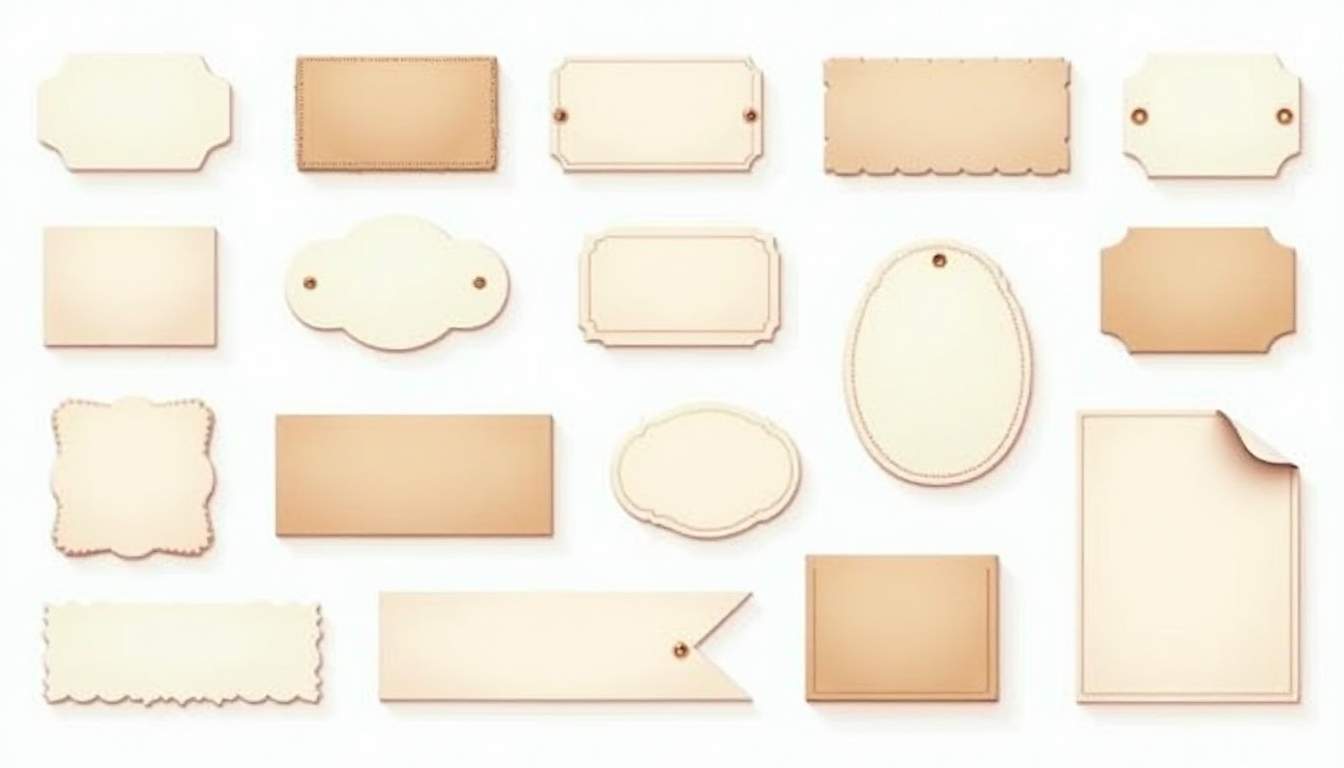
In today’s fast-paced business environment, organization and branding are more important than ever. One simple yet powerful tool that helps companies stay organized, efficient, and professional is the use of blank labels. These unprinted labels offer a blank canvas for a variety of applications, making them incredibly versatile for businesses of all sizes and industries.
From small startups to large corporations, blank labels can be customized and adapted to meet specific needs, whether for shipping, inventory management, product identification, or office organization. This article explores the many types of blank labels, their materials and sizes, and how businesses can leverage them to streamline operations and enhance their brand presence.
What Are Blank Labels?
Blank labels are adhesive labels that come without any pre-printed text or graphics. Unlike pre-designed labels, blank labels provide flexibility for businesses to print or write their own information as needed. They are available in a wide range of shapes, sizes, and materials, catering to different applications and environments. From glossy finishes that enhance product presentation to matte surfaces that are easy to write on, the variety ensures that there is a suitable option for every labeling requirement.
Because they are unprinted, blank labels can be used across multiple departments or products without the need to order custom labels for each purpose. This makes them a cost-effective and adaptable solution for many businesses. Moreover, the ability to customize labels on-the-fly means that companies can respond quickly to changing demands, whether it’s a seasonal promotion or an unexpected inventory change, without incurring additional costs or delays associated with traditional printing methods.
Common Uses of Blank Labels
Blank labels are incredibly versatile and can be used in countless ways. Some of the most common applications include:
- Shipping and Mailing: Printing addresses, barcodes, or tracking numbers on demand.
- Inventory Management: Labeling products, shelves, or bins to keep track of stock.
- Product Identification: Adding batch numbers, expiration dates, or product details.
- Office Organization: Labeling files, folders, and office supplies for easy identification.
- Event and Name Tags: Creating custom name tags or badges for conferences and meetings.
With the ability to print variable information, blank labels are ideal for dynamic environments where information changes frequently. Additionally, they can be used creatively in crafting and DIY projects, allowing individuals to personalize gifts or create unique home decor items. The ease of customization opens up possibilities for small businesses and hobbyists alike, enabling them to brand their products or events in a way that resonates with their audience. Furthermore, as sustainability becomes increasingly important, many manufacturers now offer eco-friendly blank label options made from recycled materials, appealing to environmentally conscious consumers. For more information or to explore a wide range of labeling solutions, visit Libra Labels.
Materials and Types of Blank Labels
One of the key factors in selecting the right blank label is the material it’s made from. Different materials are suited for different environments and uses, ranging from paper to synthetic films. Understanding the specific requirements of your labeling application can greatly enhance the effectiveness and longevity of your labels.
Paper Labels
Paper labels are the most common and economical option. They are typically used for indoor applications where durability is not a primary concern. Paper labels are easy to write on and print well with most printers, making them suitable for general office use, shipping labels, and temporary product labels.
However, paper labels are not water-resistant and can tear easily, so they are not ideal for outdoor use or environments where moisture is present. Additionally, paper labels can be customized with various finishes, such as matte or glossy, to enhance their aesthetic appeal. This versatility makes them a popular choice for promotional materials and event labeling, where visual impact is important.
Polyester and Vinyl Labels
For more durable labeling needs, synthetic materials like polyester and vinyl are excellent choices. These labels are resistant to water, chemicals, and abrasion, making them suitable for harsh environments such as warehouses, manufacturing plants, and outdoor storage.
Polyester labels often have a glossy finish and can withstand exposure to sunlight and extreme temperatures. Vinyl labels are flexible and can conform to curved surfaces, which is useful for labeling pipes, cables, or irregularly shaped products. Moreover, both polyester and vinyl labels can be printed with high-resolution graphics, making them ideal for branding and marketing purposes. Their durability ensures that they maintain their appearance and legibility over time, even in challenging conditions.
Polypropylene Labels
Polypropylene labels strike a balance between paper and more rugged synthetic materials. They are water-resistant and have good tear resistance, making them a popular choice for product labeling in retail and food industries. Polypropylene labels also tend to have a matte finish, which reduces glare and improves readability.
In addition to their practical benefits, polypropylene labels can be produced in a variety of colors and sizes, allowing for a high degree of customization. This adaptability makes them suitable for a wide range of applications, from labeling jars and bottles in the food industry to organizing inventory in retail settings. Furthermore, their resistance to oil and chemicals means they can be used in environments where spills are common, ensuring that important information remains visible and intact.
Choosing the Right Size and Shape
Blank labels come in a variety of sizes and shapes to fit different applications. Selecting the right size is crucial to ensure the label contains all necessary information without wasting material or space.

Standard Sizes
Common sizes for blank labels include small rectangles (such as 1” x 2”), larger shipping label sizes (like 4” x 6”), and square or circular labels for branding or product identification. Many businesses find standard sizes convenient because they fit well with popular label printers and software templates.
Custom Sizes and Shapes
For businesses with unique labeling needs, custom sizes and shapes are available. Die-cut labels can be made in virtually any shape, from ovals to intricate designs, allowing companies to create labels that stand out or fit specific product contours.
Custom shapes are especially useful for branding purposes, as they can complement a company’s logo or packaging design. However, custom labels typically come at a higher cost and may require minimum order quantities.
Printing Options for Blank Labels
One of the main advantages of blank labels is the freedom to print personalized information on demand. Depending on the volume and type of printing required, businesses can choose from several printing methods.

Inkjet and Laser Printers
For small to medium volumes, inkjet and laser printers are the most accessible options. Many blank labels are compatible with these printers, allowing businesses to print addresses, barcodes, or product details as needed. Laser printers tend to produce sharper text and are more resistant to smudging, while inkjet printers offer vibrant color printing.
When selecting blank labels for these printers, it’s important to choose labels specifically designed for inkjet or laser printing to ensure optimal print quality and adhesion.
Thermal Printing
Thermal printers use heat to transfer images onto labels, making them a popular choice for high-volume shipping and inventory labeling. There are two types of thermal printing: direct thermal and thermal transfer.
- Direct Thermal: Uses heat-sensitive labels that darken when heated. These labels are simple and cost-effective but tend to fade over time, especially when exposed to heat or sunlight.
- Thermal Transfer: Uses a ribbon to transfer ink onto the label, producing durable and long-lasting prints. Thermal transfer labels are ideal for industrial applications where labels must withstand harsh conditions.
Handwriting and Stamping
For quick, low-tech labeling, blank labels can also be written on by hand or stamped with rubber stamps. This method is useful for temporary labels, small batches, or when digital printing is not available.
Benefits of Using Blank Labels in Business
Blank labels offer several advantages that make them a valuable asset for businesses across industries.
Flexibility and Customization
Because blank labels come without pre-printed information, they allow businesses to customize each label according to current needs. This flexibility is especially useful for companies with frequently changing inventory, multiple product lines, or seasonal promotions.
Cost-Effectiveness
Ordering blank labels in bulk is often more economical than purchasing pre-printed labels, especially when label information changes regularly. Businesses can print only what they need, reducing waste and inventory costs.
Improved Organization and Efficiency
Using blank labels helps streamline operations by making it easy to identify products, shipments, and office supplies. Clear labeling reduces errors, speeds up processing times, and enhances overall workflow.
Professional Appearance
Custom-printed blank labels give products and packages a polished, professional look. This can improve customer perception and reinforce brand identity, even when labels are printed in-house.
Tips for Selecting and Using Blank Labels
Choosing the right blank labels and using them effectively requires some planning. Here are a few tips to help businesses maximize the benefits of blank labels.

Assess Your Needs
Start by evaluating what you need the labels for. Consider factors such as the environment (indoor vs. outdoor), surface type (smooth vs. textured), durability requirements, and the type of information to be printed.
Test Before Buying in Bulk
Order sample packs or small quantities to test different materials and sizes with your printer and application. This helps ensure compatibility and print quality before committing to larger orders.
Invest in Quality Adhesives
Adhesive quality is critical to label performance. Choose labels with adhesives suited to your surfaces and conditions—permanent adhesives for long-term use, removable adhesives for temporary labeling.
Use Label Design Software
Leverage label design software to create professional-looking labels quickly. Many software options allow you to incorporate barcodes, logos, and variable data for efficient printing.
Store Labels Properly
Keep blank labels in a cool, dry place to maintain adhesive quality and prevent curling or discoloration.
Conclusion
Blank labels are a versatile, cost-effective solution that can meet the diverse needs of any business. Their adaptability in size, material, and printing options makes them suitable for a wide range of applications—from shipping and inventory to product identification and office organization.
By understanding the different types of blank labels and how to select the right ones, businesses can improve efficiency, maintain organization, and present a professional image to customers. Whether printing in-house or handwriting labels, blank labels provide the flexibility needed to keep operations running smoothly and effectively.
